



PA0RDT MINI-
After a change of ownership at my neighbour’s property in 2012, I was forced to remove my K9AY from the land next to my backyard. But luckily, the new owner allowed me to extend my existing underground feedline in order to cross completely her property and reach the hill where my Beverages are running freely. With the new underground extension, the feedline has now a total length of 50 meters and stops right at the foot of the hill located behind. Due to the steepness of the ground and the forest density, it isn’t possible to erect anything that needs space like K9AY or EWE antennas for instance. This is where the idea of trying the notorious pa0rdt Mini-
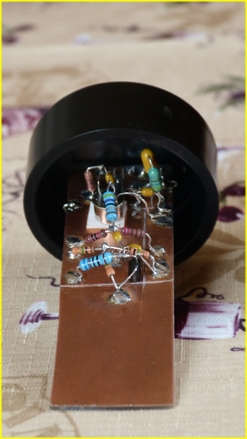
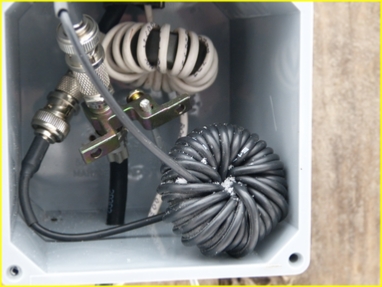
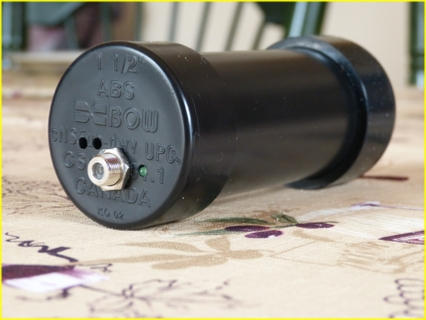
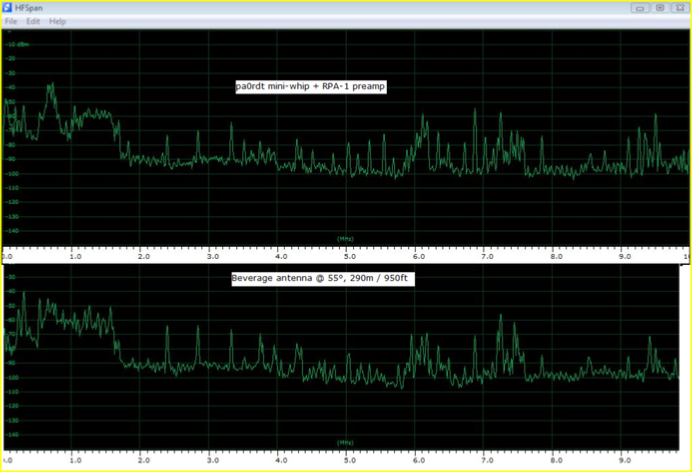
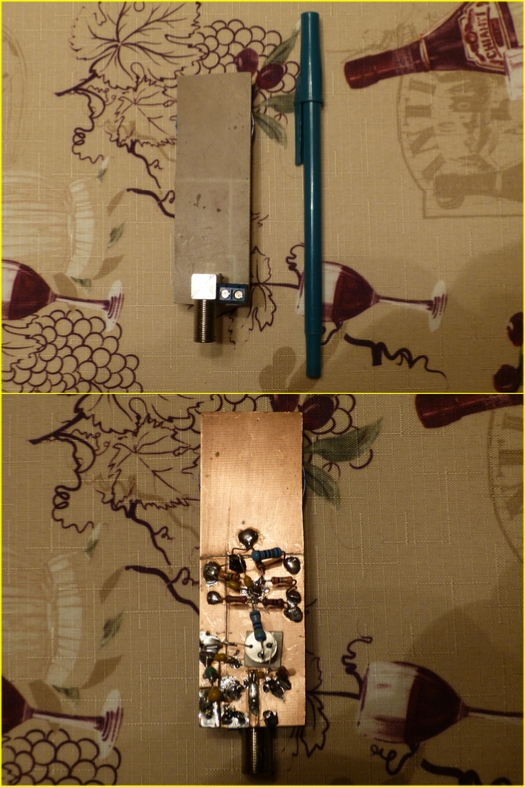
Top and bottom view of the main board / antenna. Additionally to my coax feedline that reaches the base of the antenna, I also have a 4 wires telephone cable that I’m using to bring in the DC voltage, going against (not by far) the original design that uses the coax itself to carry the DC feed. Looking at the above picture, the antenna section of the circuit is located on the upper part of the PC board. No kidding! How seriously this tiny surface can compete with a 300m Beverage ?
The whip is mounted on an ABS 1½ X 6 inches tubing. I’ve added a LED power indicator which is always practical when troubleshooting a failure on the system. As for the two small holes on the connector cap, this is where the DC connects. The two wires each attach to a screw connector. The access to the screw heads is located on the side of the cap through two additional holes.
This weatherproof plastic box is located at the base of a 4 meters high wooden mast and this is where both feedline and supply voltage cable are being choked. The feedline coax braid connects to ground right after the choke via a 1.7 meter copper plated rod.
Now, into the comparisons...
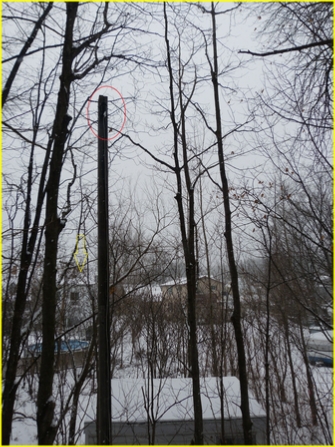
A view of the mast where the mini-
As previously mentioned, I was sceptical about the mini-
Now, for Trans-
Overall, the performance of the pa0rdt mini-
If you which to learn about the details of this intriguing achievement, see Roelof Bakker explanatory document of his active mini-
| Receiving Station Setup |
| Receivers |
| Antennas |
| Line / Antenna switchers |
| Lightning protection |
| Others |
| Conventional receivers |
| Microtelecom Perseus |
| SDRPlay |
| Beverages |
| K9AY |
| PA0RDT Mini-Whip |
| Miscellaneous |
| Asian audio files |
| African audio files |
| European audio files |
| Middle-East audio files |
| Latin American-Caribbean audio files |
| 2015 St-Patrick' solar storm audio files |
| DX Curiosities |
| August 2007 bandscan |
| August 2014 bandscan |
| FMDX equipments |
| FM logs 2017-2018 |
| FM logs 2020 |
| FM logs 2021 |
| FM logs 2022 |
| FM logs 2023 |